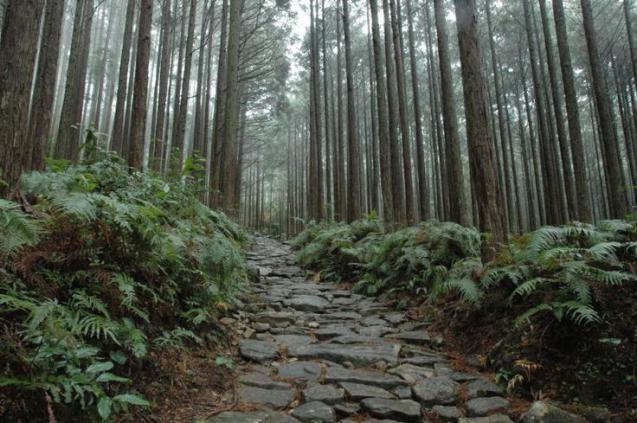
On the forested and mountainous area of the Kii Peninsula in the southernmost part of mainland Japan, you may see the Pacific Islands incorporated in sacred sites across Nara, Wakayama and Mie Prefectures namely Yoshino/Omine, Kumano Sanzan, Koya-san and the pilgrimage routes that connect them. Each of the three sites contain shrines and was founded in the early 9th century.
These sites, together with the pilgrimage routes and the surrounding forest reflect the fusion of Shinto and Buddhist beliefs that illustrate the development of religious cultures in Japan as well as the well-documented tradition of the sacred mountain that was maintained over 1,200 years.
Sacred Sites and Pilgrimage Routes in the Kii Mountain Range was added in the UNESCO World Heritage Site in 2004. Today, the shrine is much visited for ritual purposes with over 15 million visitors annually.
Things to see
The Sacred Sites and Pilgrimage Routes is a world heritage site namely the Yoshino/Omine, Kumano Sanzan, Koya-san and the route that connects them.
Yoshino and Omine, located north of the Kii Mountains was developed as a sacred place for Shugendo, a combination of mountain worship from Shintoism, Buddhism and Taoism. The site is famous for cherry blossom viewing.
Kumano Sanzan, a term referring to the three grand shrines in the southeastern part of the Kii Mountain range namely the Kumano Hongu Taisha Grand Shrine, Kumano Nachi Taisha Grand Shrine and Kumano Hayatama Taisha Grand shrine. Back in the 11th century, these Grand Shrines became a pilgrimage destination for the Imperial family and aristocrats.
Koyasan, it is a religious city on the mountain top where you can find more than a hundred temples and most of them are welcoming visitors to stay to experience the traditional Japanese culture.
Lastly, the ancient pilgrimage routes that connects those sites are called the Kumano Kodo, it is one of the only two UNESCO World Heritage pilgrimage routes in the world. Walk through the routes to appreciate the historical and natural scenery.
To get to Kii Peninsula where the heritage sites is located; From Tokyo, take the JR Tokadaido Shinkansen to Osaka and then a JR Limited express onto the Kii Peninsula.
Appreciate the historical and natural scenery on the walking trails of Kumano Kodo that lead to the World Heritage site and experience Japan's traditional culture. Hiking is allowed in the area, just plan your trip ahead of time, check the weather forecast and prepare a lot of water and food as it will be a very long long trip.
Inns are also available most especially in the Koyosan Area where you can stay for a long time and rest for a while for your next destination.
Submit Itinerary
Signup
- Sign Up
- Already a member? Login Now!
